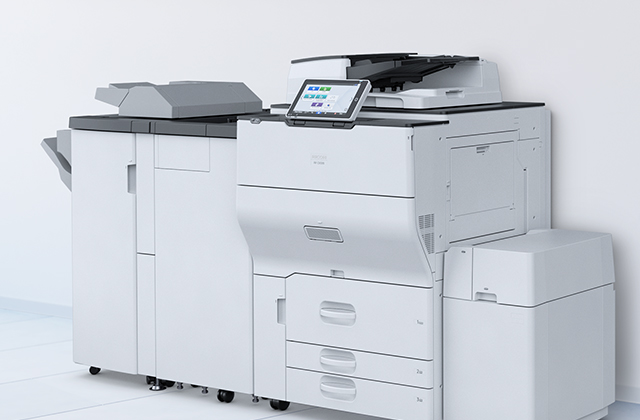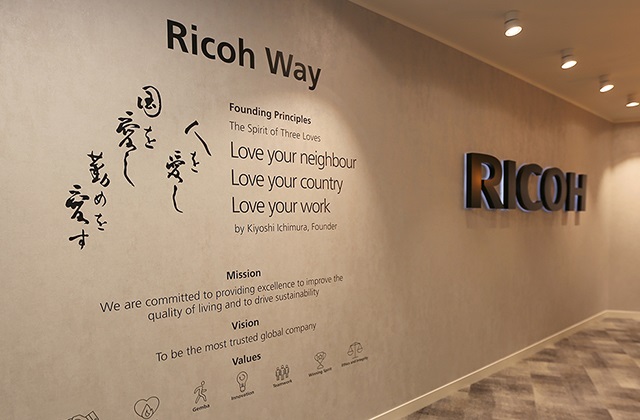Three steps to future-proof your workplace technology
And it’s not just industry analysts who have identified these trends. European employees can see how workplace technologies such as robotics and artificial intelligence (AI) will change the way they work.
According to Ricoh’s research, 4-in-10 employees expect that in the near-future they will be working in a job that doesn’t exist today. Scary or exciting? I choose the latter – and so does Europe’s workforce.
Employees foresee that these technologies will impact their working lives in several ways:
- More immediate access to data (44%)
- The ability to work from home more frequently (42%)
- A reduction in repetitive tasks (41%)
- Automation of admin tasks (36%)
All of these factors speak to a much more modern conception of the world of work. One where business data helps employees to make smarter decisions and boosts effectiveness. Productivity is essentially a measure of output over time. By reducing the amount of time wasted on repetitive admin these technologies free up employees to focus on adding real value.
The theory sounds great. But, how can business leaders ensure they’re making the right workplace technology investments to prepare for a more productive future? Here are three tips for identifying and capitalising on these trends:
- Fully understand your employees’ expectations. 59% of employees believe better technology would have the most positive impact on their working day. Surprisingly, this eclipses higher pay (58%), more colleagues (20%) and benefits such as free food (18%)!
- Identify and invest in the right form of technology. This may seem like an obvious step, but employees are not convinced their bosses are taking it. 47% of employees don’t think their workplace technology enables any productivity benefits. Employees must be consulted to ensure that investments in technology will actually benefit them as end users.
- Up-skill existing employees in technology. 56% of European employees want more investment in training on workplace technologies. The temptation at times of change can be to look outward and hire in the expertise necessary to make the most of exciting new technologies. However, in following the previous two steps, employers will have effectively assessed the needs of their business. This includes an analysis of the capabilities of staff to fully utilise the technology being introduced.
It’s telling that only 27% of employees think their company invests the right amount in technology training. This may go some way to explaining why an astonishing 34% of employees say they still don’t feel equipped to use the most common software and hardware solutions such as Microsoft Office, multi-function printers and PCs. Gearing up a business to capitalise on the productivity and cost benefits that new workplace technologies will bring is a complex process.
Of course, technology does not begin and end with itself. Building the foundations for new technologies and the transformations they bring has to start with those who will ultimately decide whether the investment is worth it, the end users: your employees.
For more information, visit www.ricoh-europe.com/thoughtleadership.
| À propos de Ricoh |
Ricoh soutient les lieux de travail numériques en utilisant des technologies et des services novateurs qui permettent aux utilisateurs de travailler plus intelligemment, où qu’ils soient.
Grâce aux connaissances et aux capacités organisationnelles acquises et cultivées au cours de ses 85 années d’existence, Ricoh est l’un des principaux fournisseurs de services numériques, de gestion de l’information et de solutions d’impression et d’imagerie conçus pour soutenir la transformation numérique et optimiser la performance des entreprises.
Le Groupe Ricoh, qui a son siège à Tokyo, a des activités importantes dans le monde entier et ses produits et services touchent désormais des clients dans environ 200 pays et régions. Pour l’exercice clos en mars 2022, le Groupe Ricoh a réalisé un chiffre d’affaires mondial de 1 758 milliards de yens (environ 14,5 milliards USD).
Pour plus d’informations : www.ricoh.be
© 2023 RICOH COMPANY, LTD. Tous droits réservés. Tous les noms de produits référencés sont les marques de leurs sociétés respectives.












